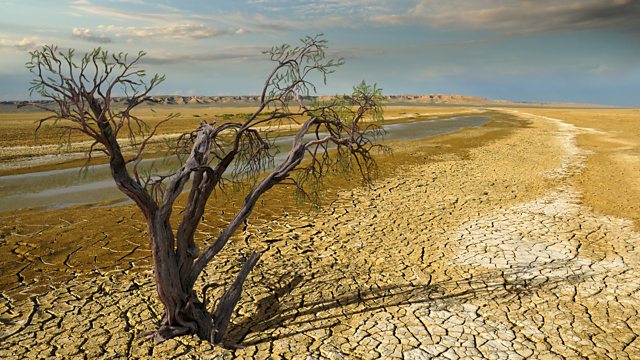Heatwaves and Droughts
Heatwaves and droughts and global warming. Also Origami robot jellyfish-catcher, saving Lebanese wild flowers and splitting water in space.
The Northern Hemisphere has been sweltering in some of the hottest temperatures recorded this summer. Records have been broken in Taiwan, California, Canada, Algeria and Oman. Yet 2018 is a La Nina year. This is the is the positive phase of the El Niño Southern Oscillation and is associated with cooler-than-average sea surface temperatures in the central and eastern tropical Pacific Ocean and usually cooler and wetter summers in the Northern hemisphere. So what’s happening? And what do we know about how these heatwaves and droughts start?
Jellyfish Catching Robot
A specially designed remote-controlled robot, inspired by Japanese origami paper-folding has been developed specifically to catch soft-bodied, gelatinous sea creatures such as deep sea jellyfish.
Splitting Water in Microgravity
To travel far in space, future astronauts will need some means for creating their own air and fuel. One way to do this is to split water into hydrogen for fuel and oxygen for air. But there’s a problem. In microgravity, this process, called electrolysis, is very inefficient. It turns out that the bubbles of hydrogen just don’t go anywhere useful and cluster around the electrodes, holding up the process. But a team of scientists have been tinkering with the texture of the electrodes to get the bubbles to behave better. And the best bit – the experiments have to take place in the 9.3 seconds it takes the capsule containing the equipment to fall 120 metres at 168km/hr to imitate microgravity on Earth.
Saving Lebanese Wild Flowers
When Michel Ayoub bought a small patch of land in Lebanon 40 years ago as insurance against the financial crisis of the impending civil war, little did he know that he was creating an important micro-reserve for rare and endangered plants. Lebanon is home to a number of endemic plants. But many of the habitats where these plants thrive have been destroyed by conflict and subsequent unregulated construction. So these tiny pockets of protected, untouched land are proving invaluable for the country’s biodiversity.
Picture: Drought, Credit: draco-zlat/Getty Images
Presenter: Roland Pease
Producer: Fiona Roberts
Last on
More episodes
Previous
Next
Broadcasts
- Thu 19 Jul 2018 19:32GMT�鶹������ҳ��� World Service except News Internet
- Fri 20 Jul 2018 04:32GMT�鶹������ҳ��� World Service except Australasia, East and Southern Africa, News Internet & West and Central Africa
- Fri 20 Jul 2018 06:32GMT�鶹������ҳ��� World Service East and Southern Africa & Australasia only
- Fri 20 Jul 2018 10:32GMT�鶹������ҳ��� World Service West and Central Africa
- Fri 20 Jul 2018 14:32GMT�鶹������ҳ��� World Service Australasia
- Sun 22 Jul 2018 01:32GMT�鶹������ҳ��� World Service West and Central Africa
- Mon 23 Jul 2018 00:32GMT�鶹������ҳ��� World Service except News Internet & West and Central Africa
Podcast
-
![]()
Science In Action
The �鶹������ҳ��� brings you all the week's science news.


